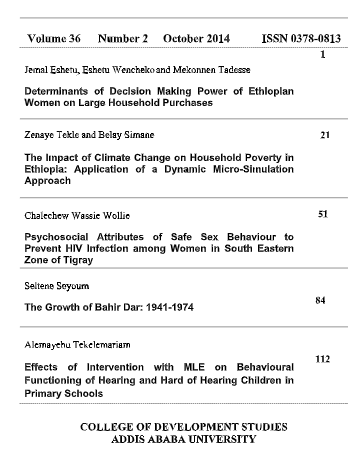Impact of Climate Change on Household Poverty in Ethiopia: Application of a Dynamic Micro-Simulation Approach
Keywords:
Hlhiopia, Climate Change. CGE Micro-simulation Modeling, PovertyAbstract
While Ethiopia’s economy has grown by seven percent annually in recent years, there are concerns that climate change could jeopardize this growth. The economy’s dependence on rain-fed agriculture that is sensitive to climate change and variability is one of the reasons why poverty is high in the country. This study used a recursive dynamic CGE micro-simulation approach to analyse the impacts of climate change on poverty in the country and across agro-ecological zones. The effect of climate change on household consumption is negative in 2050 for both rural and urban areas. The households at the drought prone areas are the hardest hit where households’ consumption expenditure declines by 30.3 percent. At the national level, total consumption of poor households declines by 21.4 percent while that of the non-poor households declines by 17.0 percent. Accordingly, the impact of climate change raises the national poverty incidence from 29.6 percent in 2010/11 to 45.15 percent in 2050. Climate change also increases the inequality among households. Hence, different adaptation and mitigation measures are vital if the country is to achieve its growth and poverty reduction targets.

